Tomato variety Banana legs
In recent years, this variety has made a lot of noise among Russian vegetable growers. And it's not just a somewhat unusual name for a tomato - Banana legs, the fruits themselves look very unusual, and the fruit brushes are a fantastic sight at all. This man-made miracle was created by American breeders (more precisely, Tom Wagner) in the late 80s of the last century. The original name of the culture is Banana Legs. Countries and continents could not resist the Banana Feet, vegetable growers were conquered by this unusual vegetable. But this miracle of selection is not included in the State Register of our country, and a few agricultural firms are engaged in the sale of seed material. Since the variety is not a hybrid, you can collect the seed on your own, so vegetable growers are happy to share the seeds with each other. The original form of tomato is cultivated in all regions of the country, depending on the climate of the regions, it can be grown in open or protected ground. There are a lot of reviews about the variety. As it should be, there are positive and negative ones. True, there are much more enthusiastic responses. But first things first.
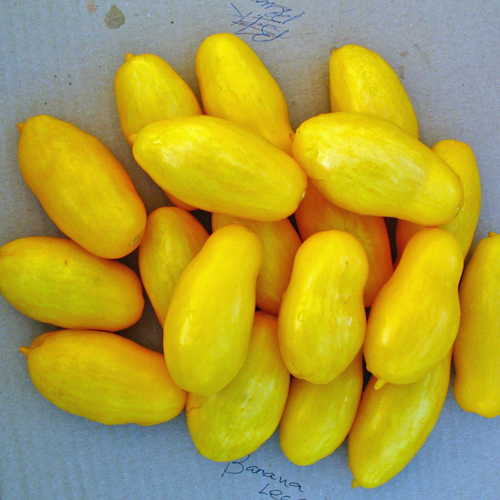
Description
The plant can be classified rather as a semi-determinate, medium-sized species. In open ground, the height of a tomato does not exceed 1 meter, the usual growth is 60 - 70 cm. In favorable greenhouse conditions, Banana legs can grow up to 1.5 meters, but hardly more. Shoot formation is moderate, foliage is not very strong. The leaves of the variety are long, but not wide, of the usual type, with a slightly corrugated matte surface, green. The internodes are not long. Inflorescences are of a simple or intermediate type. The first fruit cluster is formed above 9-11 leaves. Clusters are full, each forming from 7 to 10 - 14 ovaries. The length of the fruit cluster can reach 32 cm. The plant forms inflorescences quite often, so the bush seems to be hung with bunches of unusual fruits. The peduncle is articulated. When you say the name of the variety, the imagination draws a powerful bush with a thick stem. In fact, the bush is very slender and graceful, so I just want to call it Banana Legs.
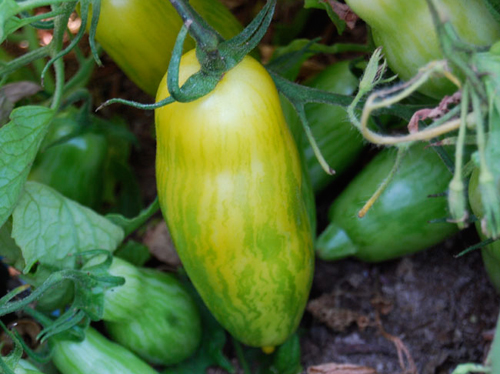
Fruits of an unusual shape, they look like elongated, slightly lumpy cream, some tomato growers compare them with thick icicles. The length of the tomato is about 7 - 8 cm, but 11 or 12 cm specimens often grow. The width is 3 - 4 cm. If you look closely at the tomatoes, an experienced tomato grower will pay attention to the fact that in one cluster the fruits are somewhat different from each other. On some, the top has a sharp nose, slightly inclined to the side, and on others - a small depression. We will return to this feature when we consider agricultural technology. The skin is shiny, thick and firm. Some gardeners even call it too thick. An unripe tomato has an amazing appearance - it is light green, but its entire surface is covered with dark green strokes. Ripening, the tomato is colored at first in a light lemon color, and well-ripened becomes deep yellow, almost orange, the strokes brighten and acquire a pearlescent transparency, becoming almost invisible. The pulp of the variety is quite dense, without voids, fleshy, moderately juicy, although for some it seems dryish. There are only 2 seed chambers, the number of seeds is small. The taste of Banana Legs is rather sweetish, without the sensation of sourness. Fans of fleshy and sweet tomatoes may not appreciate it; for gourmets, the taste will seem rather ordinary, and the taste itself will be bland. The average weight of fruits is 70 - 80 grams; in a greenhouse, with proper formation, a 100 gram tomato can be grown.
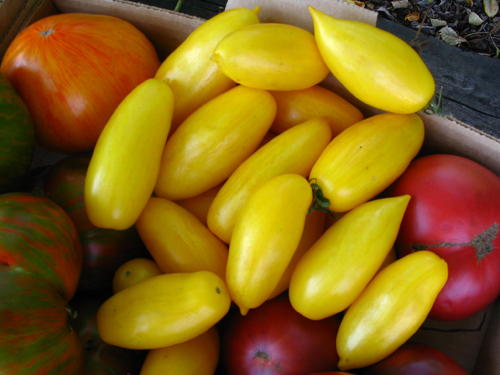
Interesting fact! Our hero, unlike red-fruited crops, is absolutely hypoallergenic, juicy, acid-free pulp is suitable for baby and diet food. Lycopene, carotene and niacin contained in yellow fruits are especially beneficial for the body.
Variety characteristics
- Banana legs belong to the early ripening, some even call it ultra-early. From the moment of emergence of full shoots to the beginning of ripening, an average of about 80 - 85 days pass in the greenhouse. On the street, the tomato ripens a little later - after 90 - 100 days. Of course, in the southern regions this process is faster;
- the yield for a relatively short plant is very good. According to tomato growers, 3-5 kg of fruits can be removed from one bush. Moreover, some gardeners pay attention to the fact that the plant bears fruit better in open ground (but this, most likely, refers to warm regions);
- despite belonging to varietal varieties, our hero has excellent immunity and is resistant to major diseases of the culture. The main thing is that early maturity allows Banana legs to avoid the main enemy of nightshades - late blight. But if you grow the variety in the second turn, then this problem can still arise;
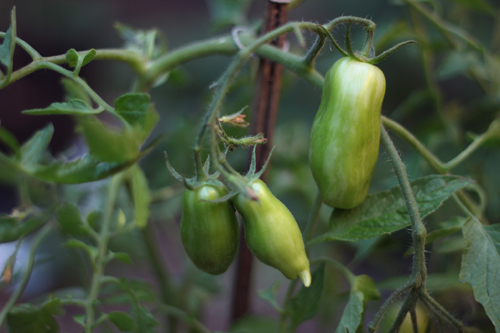
- dense skin protects tomatoes from cracking, even in greenhouses or during periods of prolonged rains;
- the plant is very light-loving, therefore, when growing in a greenhouse, select the lightest corner for it, otherwise the yield will be low;
- the transportability of tomatoes is good, but there is one "but". During long journeys, the pulled-out spouts may wrinkle. In general, this indicator is at a high level;
- The gardeners praise the keeping quality very much. Subject to generally accepted storage rules, the harvest of Banana Legs is perfectly preserved for about 2 months. And if you collect the fruits at the stage of technical ripeness, then the shelf life can be extended by a whole month;
- the way of use is universal. Tomatoes replenish the lack of vitamins in the body in their natural form, salads with their participation are not only tasty, but also bright, look aesthetically pleasing. The firm flesh, the right weight and size, and the tough skin make it extremely suitable for canning and pickling whole fruits. In addition, ripe tomatoes make excellent tomato products and sun-dried tomatoes.
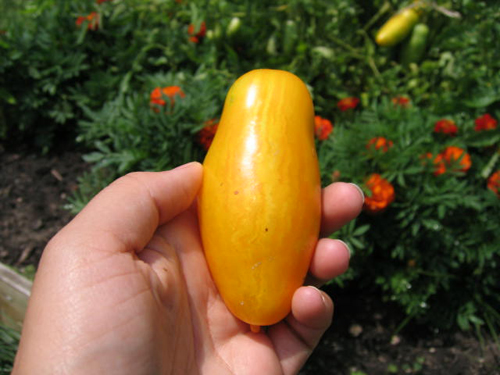
Agrotechnics
Banana legs can be grown by direct sowing in the ground or by seedling. The second option is most suitable for cultivation, and regardless of the regions. It is better to calculate the sowing time yourself, given that the seedlings ready for transplanting should be at least 60 - 65 days. The pick is carried out in the phase of 2 true leaves. The seedless method can be used to grow the variety in the southern regions or in heated greenhouses. The recommended planting density is 3 - 3.5 pieces per 1 square meter, but a tighter planting is also allowed - up to 5 pieces per 1 square meter. meter. To achieve the ideal combination of yield and fruit size, the plant is formed into 2 or 3 stems. But formation of 4 - 5 stems is allowed. In this case, the tomatoes will be slightly smaller, but the yield will definitely be higher. In any of the selected options, all stepchildren and leaves up to the first inflorescence are removed. Banana legs need abundant, but not excessive watering, and when the ripening process begins, the amount of moisture is reduced. For feeding, universal balanced fertilizers are used, containing all the trace elements necessary for the plant. There is no need to overfeed the tomato; three applications after transplanting are enough.
Seed collection
And now about the features of collecting seeds. As already mentioned, fruits on one cluster may have some differences. So, experienced tomato growers recommend collecting seed from precisely those tomatoes that have a small depression at the top. It is desirable that they grow in the second or third brush.
Banana legs are a real gift not only for exotic lovers. The bush, abundantly hung with bright tomatoes, will surprise anyone, even a person far from the garden theme.The advantage of this variety is not only in its high yield, but also in its excellent resistance to diseases, and this makes it easier to care for it. A bountiful harvest can be used in its natural form, and in cooking, and in preparations. Of course, there is a lot of controversy about the taste and hardness of the skins. But most gardeners liked this variety both to their taste and to their liking. It is not very easy to acquire seeds, but once you get them, you can carry out further harvesting of seed material yourself.








